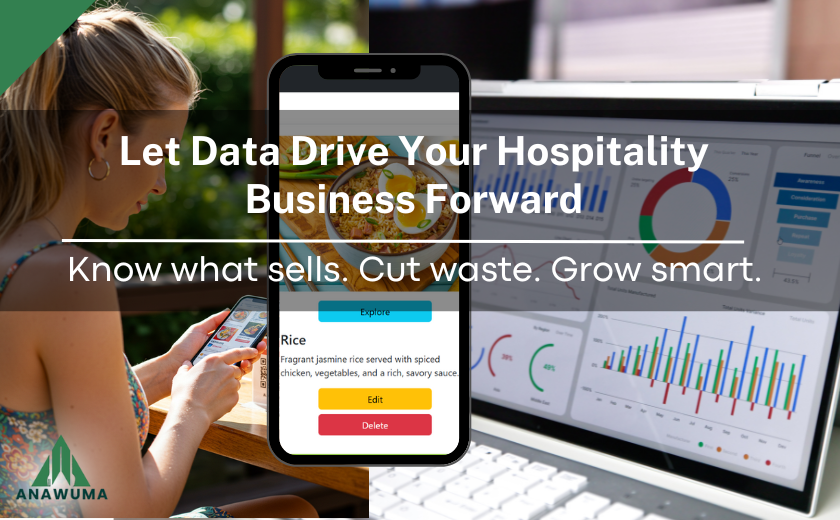
The Secret Ingredient to Success: How Data Can Transform Your Restaurant, Cafe, or Hotel
In the competitive world of hospitality, we all know that great food, impeccable service, and a welcoming atmosphere are essential. But what if there was a secret ingredient that could take your business to the next level? That ingredient is data.
Data isn't just for tech giants and big corporations. It's a powerful tool that, when used correctly, can help small restaurants, cafes, spas, and hotels make smarter decisions, reduce waste, and increase profits. Here's a look at how using data can influence your business for the better.
1. Know Your Menu, Inside and Out
Have you ever wondered which of your menu items are the real stars and which ones are just taking up space? Data gives you the answers. By tracking customer buying behavior, you can identify:
- Fast-Moving Items: These are your most popular dishes and drinks. Knowing them helps you ensure you always have enough ingredients in stock, preventing a frustrating "sold out" notice for your guests.
- Seasonal Trends: Does your refreshing iced coffee sell more in the summer? Do hearty soups fly off the menu in the winter? Data helps you understand these patterns, allowing you to adjust your inventory and menu offerings accordingly.
With this knowledge, you can optimize your purchasing decisions. You'll buy more of what sells and less of what doesn't, leading directly to a significant reduction in food cost and food waste.
2. Fine-Tune Your Menu for Maximum Demand
Data doesn't just tell you what's selling; it can also help you figure out why some items aren't. An item might be a slow mover because it's priced too high, or perhaps a particular ingredient doesn't suit your guests' tastes. By analyzing sales data, you can take proactive steps to improve demand:
- Adjust Pricing: Is a dish too expensive for your local market? Data can show you if a small price reduction could dramatically increase sales.
- Remove or Revise: If an item consistently underperforms, you can make the strategic decision to remove it from the menu entirely and introduce a new, more promising item. This keeps your menu fresh and exciting.
By using data to guide these decisions, you stop guessing and start making informed changes that directly impact your bottom line.
3. Drive Growth and Plan for the Future
Your sales data isn't just about day-to-day operations; it's a roadmap for your organization's growth. Regularly analyzing sales data can help you:
- Identify Growth Trends: Is your business steadily growing week over week, or are there seasonal dips you need to prepare for?
- Set Realistic Goals: Use past performance to set achievable targets for your team.
- Plan for Expansion: If your sales data shows consistent, strong growth, it might be the right time to consider expanding your hours, your staff, or even opening a new location.
Data provides the evidence you need to make confident decisions about the future of your business.
How to Get This Valuable Data
All of this sounds great, but where do you get this data without a team of analysts? Modern order management systems make it simple. Systems like Anawuma automatically track every order placed via QR code, giving you instant access to powerful analytics. You can see your best-selling items, busiest times, and even track the performance of seasonal specials, all from an easy-to-use dashboard.
By adopting a system that collects and organizes this data for you, you can move away from guesswork and towards a data-driven approach that boosts your profits and ensures the long-term success of your business.







